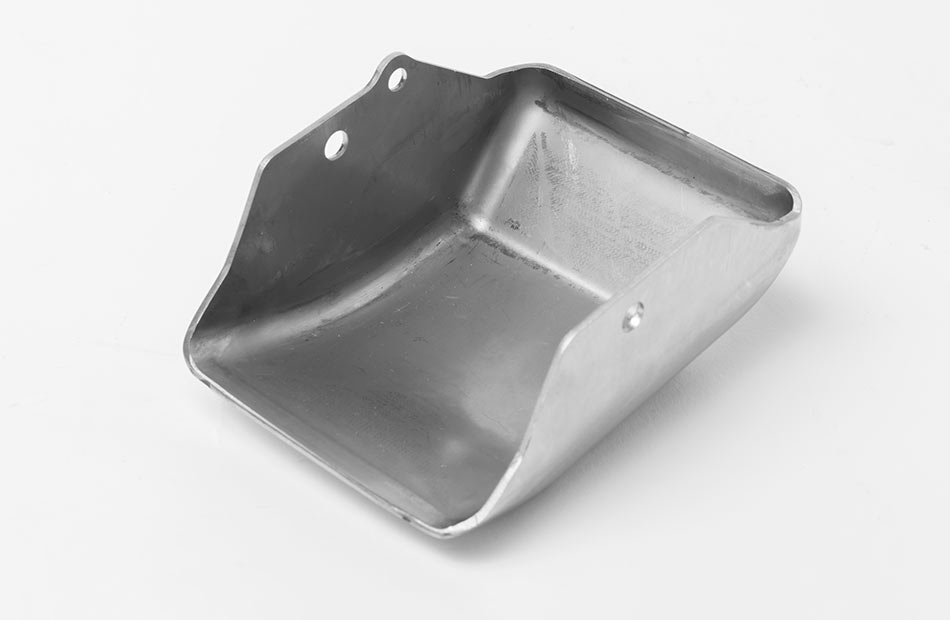Advanced Metal Stamping Approaches for Accuracy Manufacturing
Wiki Article
Steel Stamping Advancements: Elevating Production Processes for Superior Results
In the world of producing procedures, metal stamping has actually long been a foundation strategy for generating a selection of accuracy parts. With the unrelenting march of technical improvement, the landscape of metal marking is going through a significant makeover.Advancement of Steel Marking Methods

In addition, improvements in product science have caused the advancement of high-strength alloys that can now be effortlessly marked into intricate forms, catering to a more comprehensive series of industrial applications. The integration of robotics and expert system has actually better optimized the stamping process by enhancing rate and accuracy while lowering the risk of human mistake.

Impact of Advanced Products
Have sophisticated products transformed metal marking processes substantially in the production sector? By making use of materials such as high-strength alloys, progressed composites, and innovative finishes, steel marking procedures can now produce components that are lighter, stronger, and much more long lasting than ever in the past.These innovative products provide remarkable mechanical residential properties, corrosion resistance, and thermal security, allowing manufacturers to fulfill the demands of contemporary sectors such as aerospace, automobile, and electronic devices. Furthermore, the use of innovative materials in steel stamping has actually facilitated the production of complex geometries and elaborate layouts that were formerly unattainable via traditional techniques.
In addition, the application of innovative materials has caused lowered product waste, lower manufacturing prices, and much shorter preparations, making metal stamping processes much more affordable and lasting. As innovation continues to breakthrough, the effect of advanced products on metal marking procedures is anticipated to drive further innovation and improve the competition of producers in the global market.
Automation in Metal Stamping
The evolution of steel stamping processes driven by the assimilation of advanced materials has established the stage for substantial innovations in automation within the production market. Automation in metal stamping has revolutionized production processes, improving effectiveness, precision, and general output top quality. With the use of robotics, sensors, and computer-controlled systems, tasks that were once manual and lengthy can currently be executed with unequaled speed and accuracy.Automation in steel stamping not just increases production prices but likewise ensures uniformity in the manufacturing procedure. By minimizing human treatment, the risk of errors is dramatically minimized, resulting in higher levels of item uniformity and reliability. Furthermore, automation allows suppliers to take on complex marking jobs that would certainly be impractical or tough to accomplish by hand.
In addition, automation in steel marking adds to a more secure working environment by reducing the requirement for staff members to take part in repeated or dangerous tasks - Metal Stamping. This change towards automation not just enhances efficiency but additionally paves the way for the click for more future of production, where innovation plays a central function in driving operational excellence
Quality Assurance and Inspection Solutions
With an emphasis on accuracy and integrity, quality assurance and inspection systems play a critical role in ensuring product excellence in steel stamping processes. These systems are created to check every phase of manufacturing, from material assessment to the last item, to assure that all parts satisfy the needed criteria. By carrying out innovative technologies such as optical inspection systems, coordinate measuring makers (CMM), and automated evaluating equipment, suppliers can discover even the smallest variances in dimensions, surface area quality, and general integrity of stamped parts.
Sustainability Practices in Metal Stamping
Structure upon the foundation of accuracy and dependability developed with high quality control and assessment systems, the assimilation of lasting practices in metal stamping processes is significantly becoming a prime focus for suppliers looking for to minimize ecological impact and optimize source usage. Sustainability techniques in steel stamping include a variety of initiatives focused on reducing waste generation, power consumption, and greenhouse gas discharges throughout the production process.One key element of sustainability in steel stamping is the adoption of environment-friendly products and innovations that advertise recyclability and waste decrease. By using recycled products and implementing energy-efficient machinery, makers can reduce their carbon impact why not look here and contribute to an extra sustainable production cycle. Furthermore, maximizing production processes to reduce material waste and energy usage not just profits the setting but additionally results in cost financial savings for services in the future.
In addition, the execution of sustainable techniques in metal stamping can boost brand reputation and interest environmentally aware customers. As sustainability proceeds to gain importance in the manufacturing sector, integrating green campaigns right into steel stamping procedures is important for long-lasting success and competition in the marketplace.
Conclusion
To conclude, metal stamping methods have actually dramatically advanced over time, incorporating sophisticated materials and automation to improve making procedures. Quality control and assessment systems play a crucial function in ensuring exceptional outcomes, while sustainability methods are progressively being applied to minimize ecological influence. These advancements in metal marking have actually reinvented the industry, resulting in more efficient and sustainable production methods for different markets.Steel stamping, once a handbook and labor-intensive procedure, has changed right into a highly automated and innovative approach of shaping steel sheets right into numerous forms and designs.Have go to the website innovative products transformed steel stamping procedures substantially in the manufacturing industry? By making use of materials such as high-strength alloys, progressed composites, and innovative coatings, metal stamping processes can currently produce elements that are lighter, more powerful, and a lot more sturdy than ever previously.
The evolution of steel stamping procedures driven by the assimilation of advanced materials has set the stage for considerable advancements in automation within the production industry.In verdict, steel marking methods have substantially developed over time, integrating advanced products and automation to enhance manufacturing procedures.
Report this wiki page